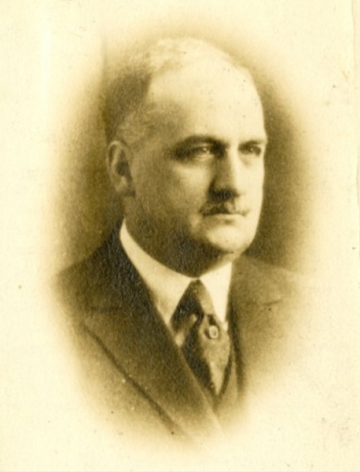Joseph-Ovide Turgeon

Birth 1875 in Montréal
Death 1933 in Montréal
FRESH FROM COLLEGE TO A LEADING ARCHITECTURAL FIRM
Born in Montréal on July 16, 1875, Joseph-Ovide Turgeon studied at the Collège de Montréal. At the end of his studies, he joined Jean-Baptiste Resther's (1830-1896) renowned architectural firm to complete his training1. It was there that he learned about the design and construction of institutional buildings such as churches, seminaries and schools.
FIRST PARTNERSHIPS
In 1897, he created a firm with Joseph-L.-D. Lafrenière (Turgeon & Lafrenière)2. This collaboration only lasted two years, after which Joseph-Ovide Turgeon partnered with Paul-Auguste Lefort (Turgeon & Lefort) in 18993, an association which also ended two years later4. During this period, Turgeon mainly designed private homes and residences, perhaps explaining why these partnerships were of short duration, as his main interest was to design large-scale buildings.
A CREATIVE AND RENOWNED ARCHITECT
From 1901 onwards, Joseph-Ovide Turgeon generally worked alone and designed his most beautiful and important works5. Among these buildings in Montréal are the five-storey building of the La Patrie newspaper, on Sainte-Catherine Street East (1905), the Saint-Édouard Church on Saint-Denis Street (1909) and the Palestre Nationale which now houses the Agora de la Danse, on Cherrier Street (1918)6.
CONTRIBUTIONS IN THE HAUT-SAINT-LAURENT
In addition to his Montréal projects, Turgeon also left his mark in the Vallée-du-Haut-Saint-Laurent region. In 1904, he participated in the restoration of the facade and bell tower of the Saint-Polycarpe Church, drew plans for the Hemmingford presbytery in 1905 as well as for the Saint-Timothée Church in 19117. His outstanding reputation and signature design in institutional architecture naturally led him to design institutional buildings such as the expansion of the Sisters of Saint Anne Convent in 1916 (with Siméon Brais) and the fire pump station in the village municipality of Vaudreuil (1921)8. Joseph-Ovide Turgeon was a member of the Association québécoise des architectes as well as the Royal Architecture Institute of Canada. He died on December 6, 1933 in Montréal.


